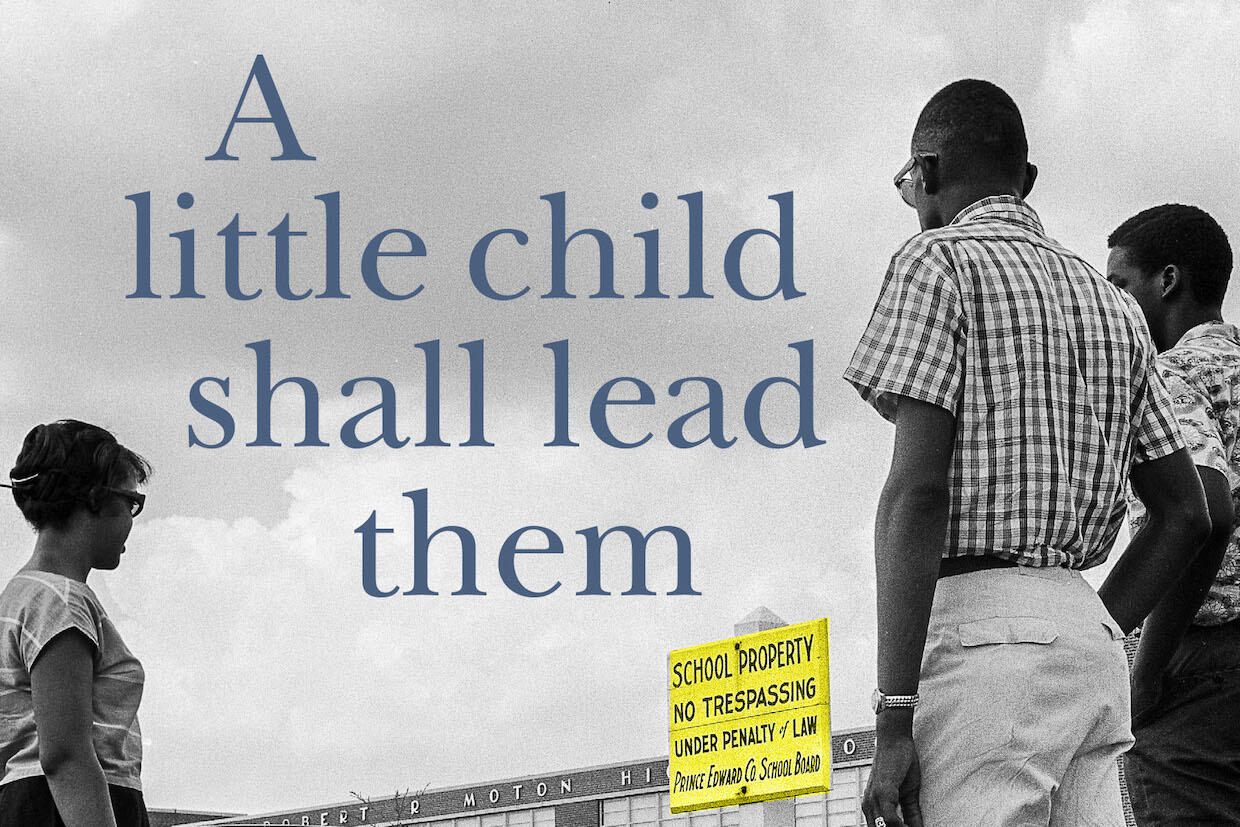
May 14, 2019
‘A Little Child Shall Lead Them’: Inside Prince Edward County’s battle for school desegregation
Share this story
A new book co-edited by a Virginia Commonwealth University history professor offers a different perspective on the battle for — and against — educational opportunity in Prince Edward County, Virginia.
The book, “A Little Child Shall Lead Them: A Documentary Account of the Struggle for School Desegregation in Prince Edward County, Virginia,” (University of Virginia Press) combines academic research and historical context with court cases, government documents, personal and scholarly writings, speeches and journalism to represent the diverse voices and viewpoints on the explosive Prince Edward County school crisis.
This important story includes a 1951 student strike for better school facilities, an NAACP lawsuit that became part of the Brown v. Board of Education decision, the birth of Virginia’s leading white segregationist organization, and county officials’ decision to close the public school system for five years rather than integrate it, perhaps the country’s most extreme example of Massive Resistance.
The book was edited by Brian J. Daugherity, Ph.D., an associate professor in the Department of History in the College of Humanities and Sciences and author of “Keep On Keeping On: The NAACP and the Implementation of Brown v. Board of Education in Virginia” (University of Virginia Press, 2016), and Brian Grogan, founder and director of Mercy Seat Films and producer of the Prince Edward County school crisis documentary “They Closed Our Schools.”
Daugherity recently discussed the new book — part of the University of Virginia Press’ Carter G. Woodson Institute Series — and explained how echoes of the school desegregation fight in Prince Edward County continue to be felt today.

Why is it important for people to understand the history of school desegregation in Prince Edward County?
Prince Edward has a unique story when it comes to school desegregation. It was the location of one of the cases that made up Brown v. Board of Education. The Brown decision was actually five different cases, and one of them came from Prince Edward County. It’s unique in the sense that the other four cases were brought by adults. This one was caused by a high school student strike. They went on strike for better school facilities, and that’s what led to the litigation. So the Prince Edward County story is central to the history of Brown v. Board of Education.
Then just a few months after the Brown decision, the largest white segregationist group in Virginia was created in Prince Edward County, right next to Longwood University. It was called the Defenders of State Sovereignty and Individual Liberties, and throughout the 1950s and 1960s, the Defenders was the largest and most effective organization that sought to maintain segregation throughout Virginia.
A third thing that makes the Prince Edward story important is that in 1959 the county was ordered to desegregate its schools by the federal courts. Rather than comply with federal court orders, county officials closed all public schools in the county for five years. Prince Edward County became the only locality in the South to close all of its public schools for such an extended period. The legacies of the school closings, and really much of this story, reverberate even in the present day. So it’s a really important story.
This book is a documentary account, which means that rather than me writing the story, a co-editor and I chose about 60 documents from the time period that tell the story of what happened.
What are some examples of those documents?
The documents include court records, speeches, newspaper articles, magazine articles, [personal] journal entries, organizational records and others. It’s a wide variety of documents and they come from various perspectives on school desegregation. For instance, we made sure to include the white segregationist perspective, but also the African American desegregation perspective. We also explore how those perspectives changed over time and the nuances in between.
Prince Edward … was the location of one of the cases that made up Brown v. Board of Education. … It’s unique in the sense that the other four cases were brought by adults. This one was caused by a high school student strike. They went on strike for better school facilities, and that’s what led to the litigation. So the Prince Edward County story is central to the history of Brown v. Board of Education.
What made you decide to tell this history with a documentary account?
There was a book that came out in the 1960s that does a good job of telling the story up to that point in time. A few years ago, there were additional books that updated that account — one was written by a historian, one by a sociologist. However, nobody has produced a book in this manner, with this sort of an approach to tell the story, and I think it offers a unique perspective on these important events.
My co-editor and I provide the historical context for each document in an introduction to the document. We have organized the documents into chapters and have provided chapter introductions to explain what was going on during that particular time. And we wrote an introduction to the book to provide an overview of the story and to situate the struggle over school desegregation in the county within the larger context of the civil rights era.
The book is grounded in current research and scholarship on school desegregation, but it’s also a teaching tool. We’re hoping the book will be used in colleges and universities, law schools and other professional schools, and maybe even some high schools, so that students can analyze the primary documents and learn from them, learn critical thinking and document analysis, in addition to the historical content. We included two to three questions at the end of each reading so the students can think about main points and a teacher could use those questions to help teach the material.
Would you describe this book as accessible to a general audience?
I think so. Anybody who is interested in this time period or this topic, I think, will enjoy the book. It should also appeal to individuals interested in law or legal history, African American history, education, race relations and ethnicity, and public policy. We tried to avoid language that might sound too academic, and sought to — and I think this is an important point — allow the documents to speak for themselves. It’s also worth pointing out that documents cover the late 1800s and 1900s, but they come all the way up into the 2000s. It’s a good look at the broad scope of the story and how it impacted people then and how it continues to impact people today.
How does understanding the history of what happened in Prince Edward County with school desegregation help us understand what is happening in education today?
I think the principal legacy of this particular story is how difficult it was for African Americans to secure equal opportunity or racial equality in Virginia and throughout the South.
People that know the story — and I think that’s really what this book allows people to do is to get to know the story — will appreciate that the struggle was much more difficult than many people believe. And the recent nature of these events indicates that it continues to impact us today. One of the things that I hope the book demonstrates is that the goals of those who were seeking racial equality have not yet been fully realized. The legacies of segregation, prejudice and discrimination, they’re apparent in Prince Edward County and around Virginia today. Property ownership, income and wealth, and levels of education, as well as other indicators of what we call the standard of living, demonstrate that there are still racial disparities and inequities based on the legacies of slavery and then the time period of Jim Crow.
I think the principal legacy of this particular story is how difficult it was for African Americans to secure equal opportunity or racial equality in Virginia and throughout the South.
How does this book fit into your larger body of research?
Most of my research and scholarship thus far has focused on the civil rights era in Virginia, particularly the topic of school desegregation, and so this project was a good fit for my past work as well as my historical interests. The Prince Edward County story is central to the story of school desegregation in Virginia, and I think this book will contribute to our collective understanding of how and why that was the case.
Anything else you would like to add about this book project?
Only that Virginia in recent years has been rocked by a series of incidents highlighting that issues related to race and social justice are still challenging the commonwealth and its citizens. It’s not enough to say, “that was in the past.” The legacies of slavery, Jim Crow, discrimination and prejudice are still with us, in many ways, and to address these issues in a meaningful way requires a proactive approach based on respect, empathy and kindness, and above all, understanding. I hope this book can help in some small way.
Subscribe to VCU News
Subscribe to VCU News at newsletter.vcu.edu and receive a selection of stories, videos, photos, news clips and event listings in your inbox.










